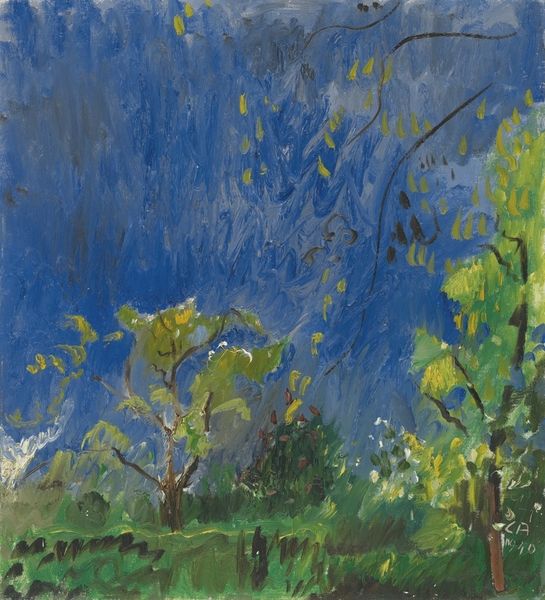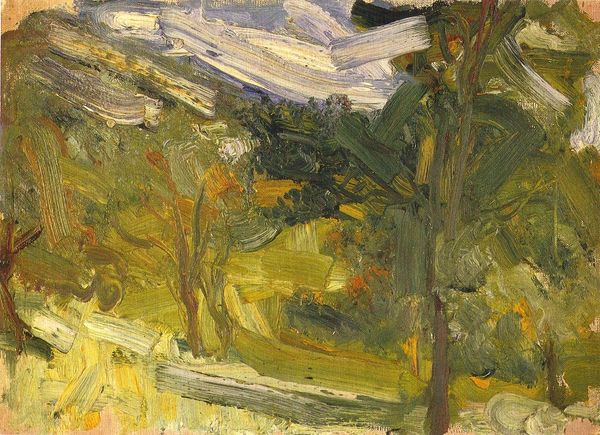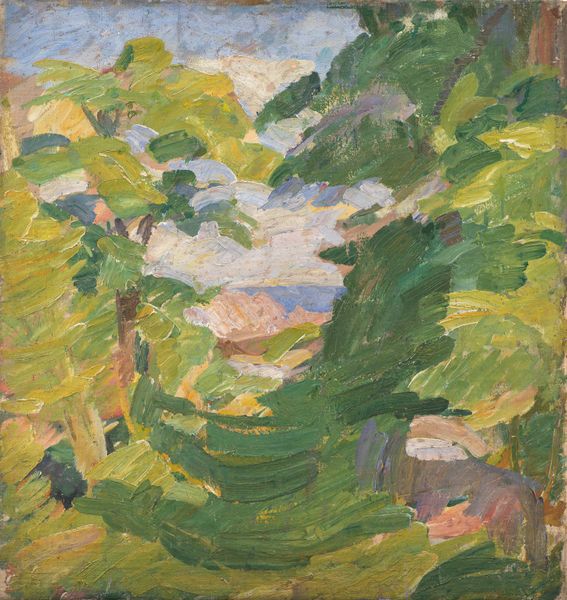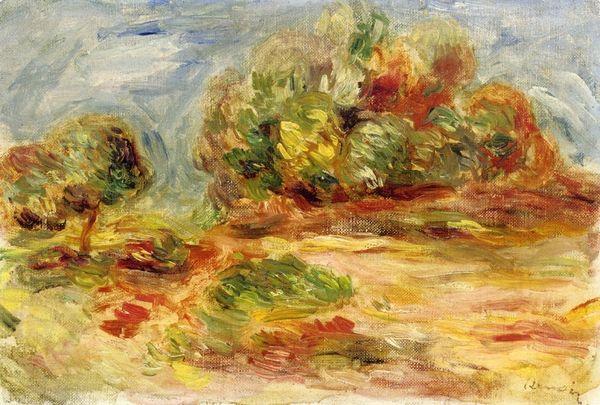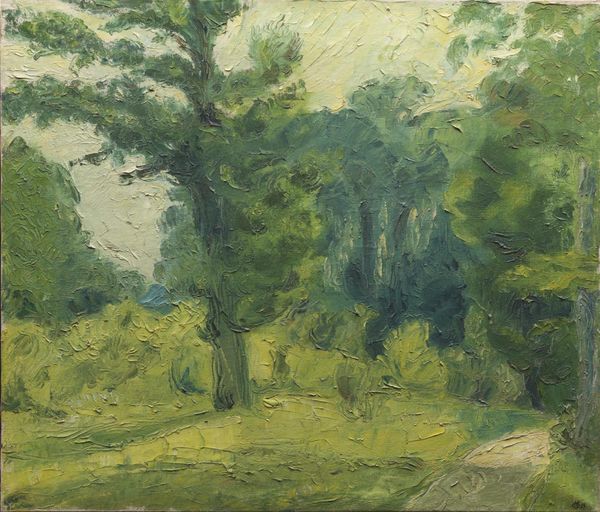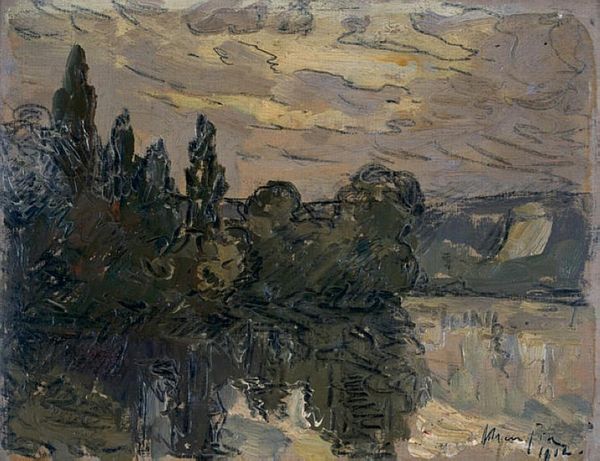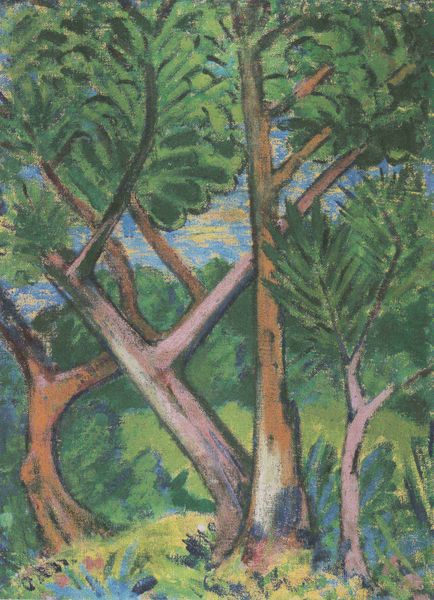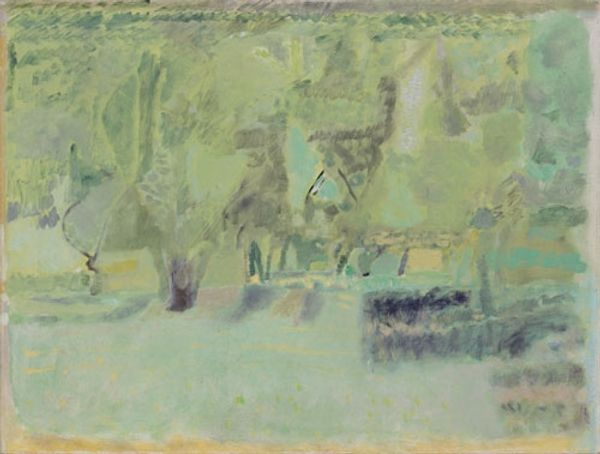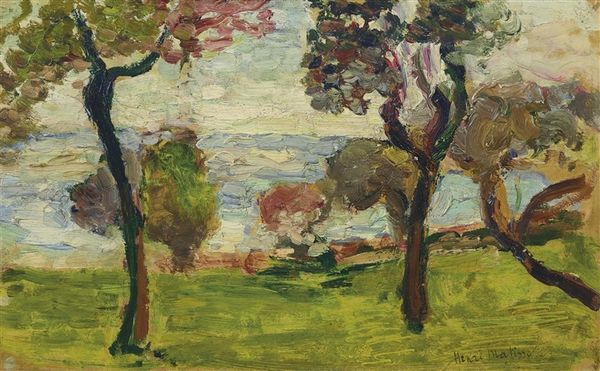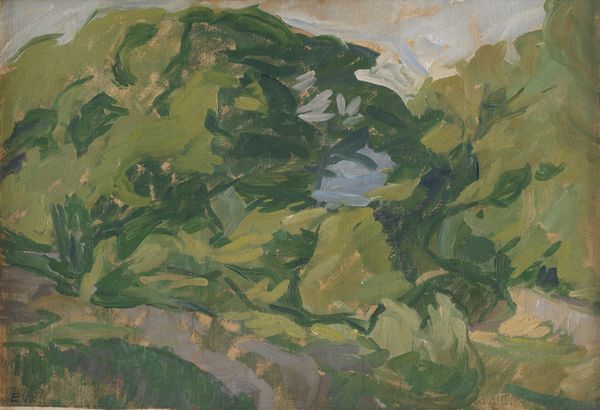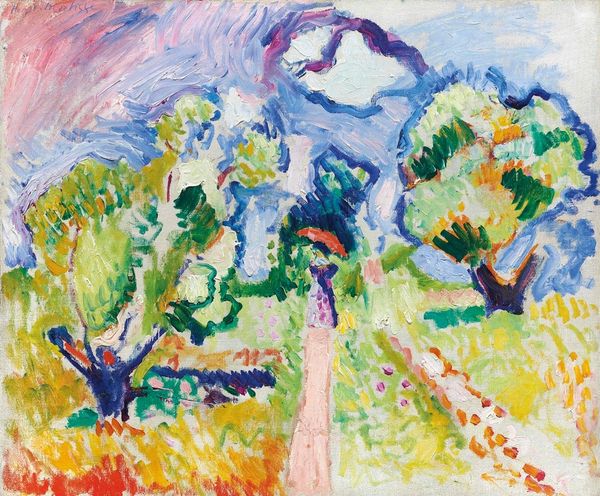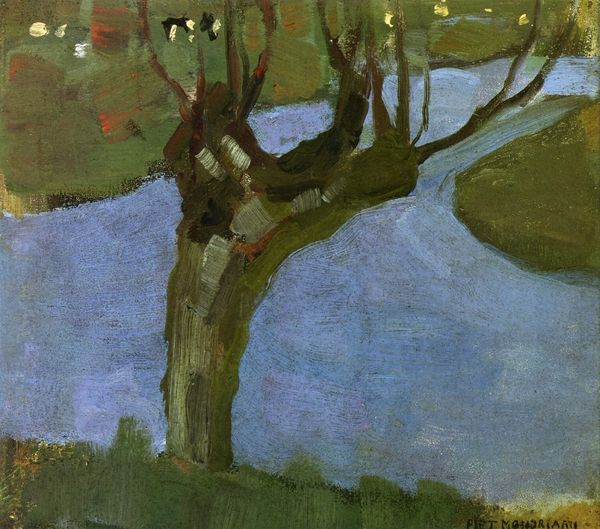
Dimensions: 32 x 33 cm
Copyright: Public domain
Editor: We're looking at Richard Gerstl's "Embankment near Gmunden," created in 1907, seemingly with thick layers of oil paint, maybe even some mixed media involved. The energy in the brushstrokes really grabs me; it’s almost unsettling in its intensity. What jumps out at you? Curator: Unsettling is a great word for it! I see Gerstl wrestling with the very act of seeing. He's not just painting a landscape; he's grappling with how we perceive reality, wouldn’t you say? Those almost violent strokes feel less about the pretty lake, and more about some turbulent emotional landscape lurking beneath. Look at how the colors almost clash. Are they harmonizing or fighting? Editor: Fighting, definitely fighting! But there's also a kind of...desperation? The way he throws the paint on feels almost rushed, like he’s trying to capture something fleeting before it disappears. It feels a little post-impressionist. Curator: Exactly. Imagine standing there *en plein air*, trying to pin down a feeling more than a view. Maybe it was windy, maybe he was wrestling with demons—or perhaps it's the birth of expressionism. What about that tension between abstraction and the real place? Do you think he ever truly felt satisfied that the canvas would reflect Gmunden? Editor: No way. It looks like he used a palette knife as much as a brush. Maybe Gerstl saw painting as another way of feeling, rather than a purely visual exercise. Curator: That's so insightful. Gerstl isn’t showing us a place. He’s sharing an experience. Something to consider while we ponder its existence in the world. Editor: Thanks, I won't look at landscapes the same way again!
Comments
No comments
Be the first to comment and join the conversation on the ultimate creative platform.
